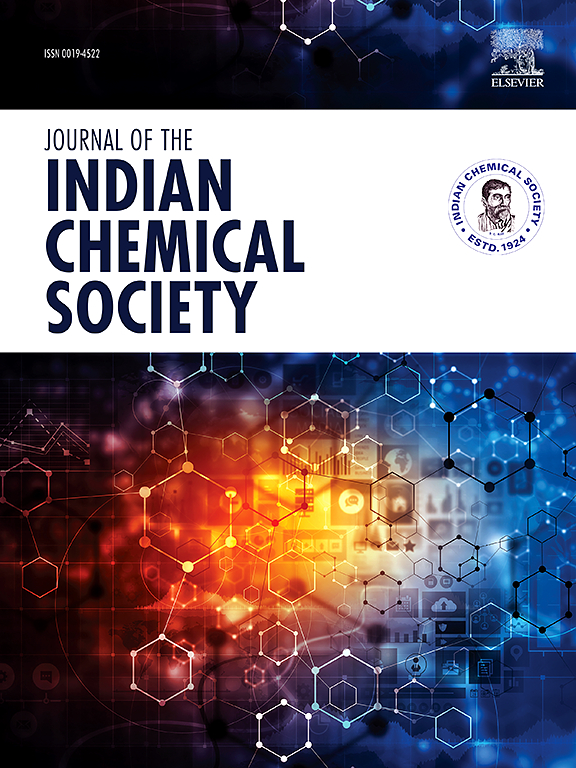Preparation and photocatalytic degradation of PTCN/SnS2/Ti3C2 QDs composites
IF 3.2
4区 化学
Q2 CHEMISTRY, MULTIDISCIPLINARY
引用次数: 0
Abstract
In this study, Ti3C2 quantum dots (QDs) were prepared via a simple hydrothermal method and loaded onto binary catalytic materials to construct ternary PTCN/SnS2/Ti3C2 QDs composites for enhancing photocatalytic performance. The materials were characterized using techniques such as XRD, TEM, FT-IR, UV–vis, BET, XPS, and PL. The results showed that Ti3C2 QDs were uniformly dispersed on the surface of PTCN/SnS2, forming a stable heterostructure. The specific surface area increased to 68.847 m2/g (5.6 times higher than that of PTCN), the visible light absorption edge redshifted to 532 nm, and the band gap narrowed to 2.1 eV. Under visible light, the composite exhibited degradation rates of 90.53 %, 79.53 %, 81.23 %, and 85.62 % for norfloxacin, pefloxacin, enrofloxacin, and ciprofloxacin, respectively. At the optimal doping amount (k = 0.0408 min−1), the catalytic activity was 6.21 times that of pure PTCN and 2.87 times that of PTCN/SnS2. Cyclic experiments demonstrated excellent stability of the composite, with a degradation rate remaining at 86 % after 5 cycles. This study is the first to construct the PTCN/SnS2/Ti3C2 QDs ternary system and propose a Z-scheme charge transfer mechanism, providing new insights for the design of high-efficiency photocatalytic materials.
PTCN/SnS2/Ti3C2量子点复合材料的制备及光催化降解
本研究通过简单的水热法制备Ti3C2量子点(QDs),并将其加载到二元催化材料上,构建三元PTCN/SnS2/Ti3C2量子点复合材料,以增强光催化性能。采用XRD、TEM、FT-IR、UV-vis、BET、XPS、PL等技术对材料进行表征。结果表明,Ti3C2量子点均匀分散在PTCN/SnS2表面,形成了稳定的异质结构。比表面积增加到68.847 m2/g(比PTCN高5.6倍),可见光吸收边红移至532 nm,带隙缩小至2.1 eV。在可见光下,复合材料对诺氟沙星、培氟沙星、恩诺沙星和环丙沙星的降解率分别为90.53%、79.53%、81.23%和85.62%。在最佳掺杂量(k = 0.0408 min−1)下,催化活性是纯PTCN的6.21倍,是PTCN/SnS2的2.87倍。循环实验表明,该复合材料具有良好的稳定性,5次循环后降解率保持在86%。本研究首次构建了PTCN/SnS2/Ti3C2量子点三元体系,并提出了Z-scheme电荷转移机理,为高效光催化材料的设计提供了新的思路。
本文章由计算机程序翻译,如有差异,请以英文原文为准。
求助全文
约1分钟内获得全文
求助全文
来源期刊
CiteScore
3.50
自引率
7.70%
发文量
492
审稿时长
3-8 weeks
期刊介绍:
The Journal of the Indian Chemical Society publishes original, fundamental, theorical, experimental research work of highest quality in all areas of chemistry, biochemistry, medicinal chemistry, electrochemistry, agrochemistry, chemical engineering and technology, food chemistry, environmental chemistry, etc.

 求助内容:
求助内容: 应助结果提醒方式:
应助结果提醒方式:


